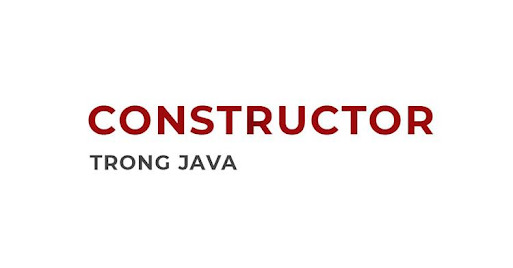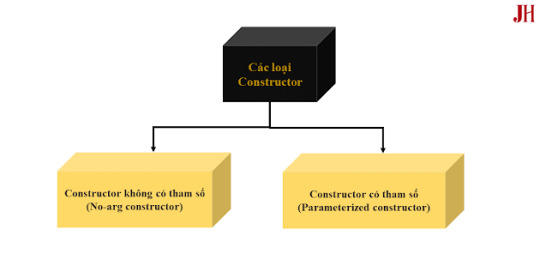#constructor in java
Explore tagged Tumblr posts
Text
Preventing Application Crashes: An Overview of Exception Handling in Java
Java development frameworks’ robust and versatile nature creates a requirement for developing applications without interruptions. Users operating within a system exhibit dissatisfaction, resulting in the loss of essential data and negative word-of-mouth releases about the product following an unanticipated shutdown or crash. Java application reliability and resilience depend on mastering the Java exception handling principles. Click to read the complete guide
#python tuple#bca course subjects#Encapsulation in Java#Constructor in java#Python tuple#Polymorphism in Java
0 notes
Text

What are autoboxing and unboxing? . . . . For more questions about Java https://bit.ly/3kw8py6 Check the above link
#wrapperclass#boxing#unboxing#objectcloning#serialization#externalizable#IOstream#finalize#runtimeclass#anonymousinnerclass#localinnerclass#memberinnerclass#interface#garbagecollector#polymorphism#java#constructor#thiskeyword#computersciencemajor#javatpoint
2 notes
·
View notes
Text
i have been vaguely considering making a minecraft mod, but every time i think about the specifics of it i remember how intensely java-brained forge was back in the days and i'm like "how likely is it that any of the 4 competing modloaders have actually made themselves less java brained in the past uhhh seven years" and i don't really want to dig in
also b/c i'm using an outdated version of ubuntu i'd have to do a complete system reinstall to get access to apt back and be able to set up a java development environment
(when i say 'java brained' the specific thing i'm thinking of was to register blocks you had to provide a class for it to autoinstance. you could not provide, you know, an object that was an instance of the block-provididing class, you had to make a singleton class. just the classic java thing of instead of having classes with parameters which you create specific instances of, you have classes that have derived classes that are only ever expected to be instanced with a blank constructor b/c all the specific object data is in the class definition instead of being able to be specified on the object level. the classic 'we don't have first-class functions so it's impossible to vary a function callback' java thing, & it was enshrined into forgemodloader at the most basic level.)
8 notes
·
View notes
Text
I decided to take part in the 100 days of code challenge!
Day 1/100 ✧˖*°࿐
Learnt java concepts like methods, invoking methods, constructors and some more.

26 notes
·
View notes
Text
I was a Java noob
At one time, every user was a newbie. Facebook recently reminded me of something I wrote 11 years ago today, when I was learning Java:
I'm still trying to wrap my mind around the notion that Java (apparently) implements write-once semantics for references and primitive types but lacks read-only semantics for methods or objects. I'm also wishing Java collections provided a copy constructor for iterators. Despite these flaws, its advantages over C++ are stark.
Looking back, here are my reactions:
In Java, the natural way to implement read-only semantics for methods and objects is to define a read-only interface. This is what the JOML library does, for instance. For each mutable class (Matrix4f, Quaternionf, Vector3d) it defines an interface (Matrix4fc, Quaternionfc, Vector3dc) with read-only semantics. I wish I'd known that trick in 2012.
Some of Java's advantages are historical. Gosling in 1995 foresaw the importance of threads and URLs, so he built them into the language. Stoustrup in 1982 did not foresee their importance. (Believe it or not, URLs weren't invented until 1994!)
Some of Java's advantages are because it didn't try as hard to maintain compatibility with C. For instance, Stoustrup was doubtless aware of the portability headaches in C, such as "int" having different limits on different architectures, but it seemed more important to be able to re-use existing C code in C++ than to fix fundamental flaws in the language.
Not sure why I wanted a copy constructor for iterators. Nowadays I rarely use iterators directly, thanks to the "enhanced for loop" added in Java SE 5. That feature was 8 years old when I learned Java. Not sure why I wasn't using it.
I love Java even more than I did in 2012. Nowadays I dread working in C/C++
#programming languages#java#computing history#c++ language#c++#facebook#software development#newbie#coding
4 notes
·
View notes
Text
Why Java Is Still the King in 2025—and How Cyberinfomines Makes You Job-Ready with It

1. Java in 2025: Still Relevant, Still Dominating Despite the rise of new languages like Python, Go, and Rust, Java is far from dead—it’s actually thriving.
In 2025, Java powers:
40%+ of enterprise backend systems
90% of Android apps
Global banking & fintech infrastructures
E-commerce giants like Amazon, Flipkart & Alibaba
Microservices and cloud-native platforms using Spring Boot
Java is reliable, scalable, and highly in demand. But just learning syntax won’t get you hired. You need hands-on experience, framework expertise, and the ability to solve real-world problems.
That’s exactly what Cyberinfomines delivers.
2. The Problem: Why Most Java Learners Don’t Get Jobs Many students learn Java but still fail to land jobs. Why?
❌ They focus only on theory ❌ They memorize code, don’t build projects ❌ No real understanding of frameworks like Spring Boot ❌ Can’t explain their code in interviews ❌ Lack of problem-solving or debugging skills
That’s where Cyberinfomines’ Training changes the game—we teach Java like it’s used in real companies.
3. How Cyberinfomines Bridges the Gap At Cyberinfomines, we:
✅ Teach Core + Advanced Java with daily coding tasks ✅ Use real-world problem statements (not academic ones) ✅ Give exposure to tools like IntelliJ, Git, Maven ✅ Build full-stack projects using Spring Boot + MySQL ✅ Run mock interviews and HR prep ✅ Help you create a Java portfolio for recruiters
And yes—placement support is part of the package.
4. Java Course Curriculum: Built for the Real World Core Java
Data types, loops, arrays, OOP principles
Exception handling, packages, constructors
File handling & multithreading
Classes vs Interfaces
String manipulation & memory management
Advanced Java
JDBC (Java Database Connectivity)
Servlet Lifecycle
JSP (Java Server Pages)
HTTP Requests & Responses
MVC Design Pattern
Spring Framework + Spring Boot
Dependency Injection & Beans
Spring Data JPA
RESTful API Creation
Security & authentication
Connecting with front-end apps (React/Angular)
Tools Covered
IntelliJ IDEA
Eclipse
Postman
Git & GitHub
MySQL & Hibernate
Live Projects
Library Management System
Employee Leave Tracker
E-Commerce REST API
Blog App with full CRUD
Interview Preparation
DSA using Java
Java-based coding problems
100+ mock interview questions
HR round preparation
Resume writing workshops
5. Who Should Learn Java in 2025? You should choose Java if you are:
A fresher who wants a strong foundation
A non-tech graduate looking to switch to IT
A teacher/trainer who wants to upskill
A professional aiming for backend roles
Someone interested in Android development
A student looking to crack placement drives or government IT jobs
6. Real Success Stories from Our Java Learners
Amit (BSc Graduate) – Now working as a Java backend developer at an IT firm in Pune. Built his confidence with live projects and mock tests.
Pooja (Mechanical Engineer) – Switched from core to IT after completing Cyberinfomines’ Java program. Cracked TCS with flying colors.
Rahul (Dropout) – Didn’t finish college but now works remotely as a freelance Spring Boot developer for a US-based startup.
Every story started with zero coding experience. They ended with real jobs.
7. Top Java Careers in 2025 & Salary Trends In-demand roles include:
Java Backend Developer
Full Stack Developer (Java + React)
Android Developer (Java)
Spring Boot Microservices Architect
QA Automation with Java + Selenium
API Developer (Spring + REST)
Starting salary: ₹4.5 – ₹8 LPA (for freshers with strong skills) Mid-level: ₹10 – ₹20 LPA Freelancers: ₹1,000 – ₹2,500/hour
Java is stable, scalable, and pays well.
8. Certifications, Tools & Practical Add-Ons After training, you’ll earn:
Cyberinfomines Java Developer Certificate
Portfolio with at least 3 GitHub-hosted projects
Proficiency in IntelliJ, Maven, Git, MySQL
Resume aligned with Java job descriptions
Interview recordings and performance feedback
9. What Makes Cyberinfomines Java Training Different
✔ Human mentorship, not just videos ✔ Doubt sessions + code reviews ✔ Classes in Hindi & English ✔ Live assignments + evaluation ✔ Placement-oriented approach ✔ No-nonsense teaching. Only what’s needed for jobs.
We focus on you becoming employable, not just completing a course.
10. Final Words: Code Your Future with Confidence Java in 2025 isn’t just relevant—it’s crucial.
And with Cyberinfomines, you don’t just learn Java.
You learn how to:
Solve real problems
Write clean, scalable code
Work like a developer
Get hired faster
Whether you’re starting fresh or switching paths, our Java course gives you the skills and confidence you need to build a future-proof career.
📞 Have questions? Want to get started?
Contact us today: 📧 [email protected] 📞 +91-8587000904-905, 9643424141 🌐 Visit: www.cyberinfomines.com
0 notes
Note
Hey Emily you are a Software Engineer tell me a difference between Methods and Constrictor in Java ?
Gonna be honest I don't work in Java, but generally methods are functions that you call on a given instantiated object like obj.method(whatever) and a constructor is a specific method called when you instantiate a new object like obj = new Whatever()
0 notes
Text
CSC 3410 Programming Assignment #3
You are to write a program name ArrayList.java that creates an ArrayList data structure that is similar to the ArrayList data Structure that exist in the java library. The class must be written to accept any type of Objects. The following must be implemented i.e. YOU must write the code (do not import them from the Java Library): <style=’mso-bidi-font-weight: normal’=””>One default constructor…
0 notes
Text
Constructor (Hàm Khởi Tạo) trong Java - Giải Thích và Ví Dụ
Constructor trong Java là một khái niệm quan trọng trong lập trình hướng đối tượng (OOP). Nếu bạn đang học Java hoặc muốn tìm hiểu cách khởi tạo đối tượng một cách hiệu quả, bài viết này sẽ giải thích chi tiết về hàm khởi tạo, vai trò, cách sử dụng và các ví dụ minh họa cụ thể. Hãy cùng khám phá!

Constructor trong Java là gì?
Constructor trong Java là gì?
Constructor (Hàm Khởi Tạo) là một phương thức đặc biệt trong lớp (class) được sử dụng để khởi tạo đối tượng. Khi một đối tượng được tạo ra bằng từ khóa new, hàm khởi tạo sẽ được gọi tự động để thiết lập các giá trị ban đầu cho đối tượng. Điểm đặc biệt của constructor là:
Có tên trùng với tên lớp.
Không có kiểu trả về, kể cả void.
Được gọi tự động khi đối tượng được tạo.
Có thể có tham số hoặc không.
Constructor giúp đảm bảo rằng đối tượng luôn ở trạng thái hợp lệ ngay khi được tạo. Đây là lý do nó được sử dụng rộng rãi trong lập trình Java.
Các loại Constructor trong Java
Trong Java, có ba loại hàm khởi tạo chính:
Constructor mặc định (Default Constructor) Nếu bạn không định nghĩa bất kỳ constructor nào trong lớp, Java sẽ tự động cung cấp một hàm khởi tạo mặc định không có tham số. Nó khởi tạo các thuộc tính của đối tượng với giá trị mặc định (ví dụ: 0 cho số nguyên, null cho chuỗi).
Constructor có tham số (Parameterized Constructor) Đây là hàm khởi tạo có tham số, cho phép bạn truyền giá trị vào để khởi tạo đối tượng với các thuộc tính cụ thể.
Constructor sao chép (Copy Constructor) Loại constructor này nhận một đối tượng khác của cùng lớp làm tham số và sao chép giá trị của đối tượng đó để khởi tạo đối tượng mới.

Ảnh mô tả các loại constructor trong java.
Đặc điểm của Constructor trong Java
Dưới đây là những đặc điểm nổi bật của hàm khởi tạo:
Không có kiểu trả về: Không giống các phương thức thông thường, constructor không trả về giá trị, kể cả void.
Tên trùng với lớp: Tên của hàm khởi tạo phải giống hệt tên lớp.
Nạp chồng (Overloading): Bạn có thể định nghĩa nhiều constructor trong một lớp với số lượng hoặc kiểu tham số khác nhau.
Tự động gọi: Constructor được gọi ngay khi đối tượng được tạo bằng từ khóa new.

Ảnh mô tả constructor không có tham số sẽ được th��m vào bởi trình biên dịch.
Ví dụ minh họa về Constructor trong Java
Dưới đây là các ví dụ cụ thể về từng loại hàm khởi tạo trong Java:
1. Constructor mặc định
class SinhVien { String ten; int tuoi; // Constructor mặc định SinhVien() { ten = "Chưa xác định"; tuoi = 0; } void hienThi() { System.out.println("Tên: " + ten + ", Tuổi: " + tuoi); } } public class Main { public static void main(String[] args) { SinhVien sv = new SinhVien(); sv.hienThi(); } }
Kết quả: Tên: Chưa xác định, Tuổi: 0
2. Constructor có tham số
class SinhVien { String ten; int tuoi; // Constructor có tham số SinhVien(String tenSV, int tuoiSV) { ten = tenSV; tuoi = tuoiSV; } void hienThi() { System.out.println("Tên: " + ten + ", Tuổi: " + tuoi); } } public class Main { public static void main(String[] args) { SinhVien sv = new SinhVien("Nguyễn Văn A", 20); sv.hienThi(); } }
Kết quả: Tên: Nguyễn Văn A, Tuổi: 20
3. Constructor sao chép
class SinhVien { String ten; int tuoi; // Constructor có tham số SinhVien(String tenSV, int tuoiSV) { ten = tenSV; tuoi = tuoiSV; } // Constructor sao chép SinhVien(SinhVien sv) { ten = sv.ten; tuoi = sv.tuoi; } void hienThi() { System.out.println("Tên: " + ten + ", Tuổi: " + tuoi); } } public class Main { public static void main(String[] args) { SinhVien sv1 = new SinhVien("Nguyễn Văn A", 20); SinhVien sv2 = new SinhVien(sv1); // Sao chép sv1 sv2.hienThi(); } }
Kết quả: Tên: Nguyễn Văn A, Tuổi: 20
Sự khác biệt giữa Constructor và Phương thức thông thường

Lợi ích của việc sử dụng Constructor trong Java
Khởi tạo đối tượng an toàn: Hàm khởi tạo đảm bảo đối tượng được khởi tạo với trạng thái hợp lệ.
Tính linh hoạt: Với constructor có tham số, bạn có thể tùy chỉnh giá trị ban đầu của đối tượng.
Tái sử dụng mã: Constructor sao chép giúp tạo ra các đối tượng giống nhau mà không cần lặp lại logic.
Một số lưu ý khi sử dụng Constructor
Không nên đặt logic phức tạp trong constructor, vì nó có thể làm chậm quá trình khởi tạo.
Nếu cần khởi tạo nhiều đối tượng với các tham số khác nhau, hãy sử dụng nạp chồng constructor.
Constructor không thể được kế thừa, nhưng lớp con có thể gọi constructor của lớp cha bằng từ khóa super.
Kết luận
Constructor trong Java là một công cụ mạnh mẽ để khởi tạo đối tượng một cách hiệu quả và an toàn. Từ constructor mặc định, constructor có tham số đến constructor sao chép, mỗi loại đều có vai trò riêng trong việc xây dựng các ứng dụng Java chất lượng. Hy vọng qua bài viết này, bạn đã hiểu rõ cách sử dụng hàm khởi tạo và có thể áp dụng vào dự án của mình.
Hãy thử viết code với constructor và khám phá thêm các tính năng của Java để nâng cao kỹ năng lập trình của bạn!
Constructor trong Java – Tìm hiểu khái niệm, vai trò và cách sử dụng hàm khởi tạo trong lập trình Java. 🌐 Khám phá chi tiết tại: Java Highlight | Website Học Lập Trình Java | Blogs Java
0 notes
Text
Encapsulation in Java – A Complete Guide
Learn everything about Encapsulation in Java with Scientech Easy's beginner-friendly guide. Understand how encapsulation helps in data hiding, improves code maintainability, and secures your Java applications. This comprehensive article covers its real-world use, syntax, and practical examples to help you grasp the concept easily. Perfect for students and developers looking to strengthen their OOP fundamentals.Scientech Easy for clear explanations and step-by-step learning on Java programming topics. Start mastering encapsulation today!

#bca course subjects#python tuple#Interface in Java#Encapsulation in Java#Method overriding in Java#Polymorphism in Java#Constructor in java
0 notes
Text

What is the difference between ArrayList and Vector? . . . . For more questions about Java https://bit.ly/3Lcw553 Check the above link
#collectionframework#array#ArrayList#Vector#collection#process#heavyweightcomponent#reflection#Classclass#Systemclass#wrapperclass#boxing#unboxing#objectcloning#serialization#polymorphism#java#constructor#thiskeyword#computersciencemajor#javatpoint
0 notes
Text
So I had another java interview today.
Technical questions that they asked:
- what is the difference between primitive data type and object data
- difference between == and .equals()
- what is a constructor used for
- what is the difference between jre and jdk
- how will u change an integer to a string and vice verda
- 3 live coding questions (reversing a string, find the max value in an array, encapsulate a class)
I did partially ok. I am not able to remember the syntax, so I struggled quite a bit with method signatures. I mixed up some concepts (for eg the == and .equals. So .equals() is the one that checks the content of the variable)
Behavioural questions that they asked:
- if you had a new team member joining, how would you guide him/her
- what does your day-to-day tasks look like
- if u have to finish a task in 2 hours, but u are unable to, what do you do?
- you have a requirement to fulfill, but the requirement is very vague. What do u do?
Questions asked based on previous experience:
- How did u design an API end point?
- How do you throw exceptions?
- What are the aspects of design that you had to consider?
1 note
·
View note
Text
java- single constructor Vs multiple constructors
❌ The Multiple Constructor Example
public class Human {
private String name;
private int limbs;
private String skinColor;
public Human(String name) {
this(name, 4, "Unknown"); // Magic numbers!
}
public Human(String name, int limbs) {
this(name, limbs, "Unknown");
}
Why this fails: Hidden assumptions (Why default limbs = 4?), duplicate validation (What if limbs < 0?), brittle maintenance (Adding bloodType breaks all constructors)
✅ The Single Constructor Solution
public class Human {
private final String name; // Required
private final int limbs; // Required
private final String skinColor; // Required
public Human(String name, int limbs, String skinColor) {
Objects.requireNonNull(name);
if (limbs < 0) throw new IllegalArgumentException("Limbs cannot be negative");
this.name = name;
this.limbs = limbs;
this.skinColor = skinColor;
}
}
benefits: No magic defaults -Forces explicit values, validation in one place - Fail fast principle, immutable by design - Thread-safe and predictable
Handling Optional Fields: The Builder Pattern For complex cases (like optional eyeColor), use a Builder:
Human britta = new Human.Builder("Britta", 4)
.skinColor("dark")
.eyeColor("blue")
.build();
Why Builders win: Clear defaults (`.skinColor("dark")` vs. constructor overloading), flexible (Add new fields without breaking changes), readable (Named parameters > positional args)
When Multiple Constructors Make Sense
Simple value objects (e.g., Point(x, y)), framework requirements (JPA/Hibernate no-arg constructor), most classes need just one constructor. Pair it with: factory methods for alternative creation logic and builders for optional parameters
This approach eliminates: hidden defaults, validation duplication and maintenance nightmares Do you prefer single or multiple constructors? Have you been bitten by constructor overload? Share your war stories in the comments!
#Java #CleanCode #OOP #SoftwareDevelopment #Programming
1 note
·
View note
Text
Most useable core Creational Design Patterns in Java(Singleton & Prototype)

Explore how Singleton and Prototype patterns streamline Java applications by enhancing performance, reuse, and maintainability in real-world scenarios.
Design patterns are tried-and-tested solutions to common software design problems. In Java, they help developers write clean, reusable, and scalable code. This post focuses on two creational design patterns: 1. Singleton Design Pattern 2. Prototype Design Pattern
1. Singleton Design Pattern: The Singleton pattern ensures a class has only one instance and provides a global point of access to it.
Why Use It: Use Singleton when you want exactly one object to coordinate actions across the system. It’s perfect for things like: Configuration settings Database connections Thread pools Logging Caches
Java Implementation (Thread-Safe Singleton): public class ConfigManager { private static volatile ConfigManager instance;
private ConfigManager() { // private constructor }
public static ConfigManager getInstance() { if (instance == null) { synchronized (ConfigManager.class) { if (instance == null) { instance = new ConfigManager(); } } } return instance; }
public void printConfig() { System.out.println(“App config data…”); } }
Database Connection Manager: import java.sql.Connection; import java.sql.DriverManager; import java.sql.SQLException;
public class DatabaseConnectionManager { private static volatile DatabaseConnectionManager instance; private Connection connection; private static final String URL = “jdbc:mysql://localhost:3306/app_db”; private static final String USER = “root”; private static final String PASSWORD = “password”;
private DatabaseConnectionManager() { try { this.connection = DriverManager.getConnection(URL, USER, PASSWORD); } catch (SQLException e) { throw new RuntimeException(“Failed to connect to DB”, e); } }
public static DatabaseConnectionManager getInstance() { if (instance == null) { synchronized (DatabaseConnectionManager.class) { if (instance == null) { instance = new DatabaseConnectionManager(); } } } return instance; }
public Connection getConnection() { return connection; } }
public class UserService { public void getUserData() { try { Connection conn = DatabaseConnectionManager.getInstance().getConnection(); // Use the connection for a query (using Statement, PreparedStatement, etc.) } catch (Exception e) { e.printStackTrace(); } } }
2. Prototype Design Pattern: The Prototype pattern lets you clone existing objects instead of creating new ones from scratch. It’s especially useful when object creation is expensive (e.g., loading from DB, complex setup).
Why Use It: When object construction is costly. When you need many similar objects with slight variations. When you want to avoid subclassing Document Template System: Building an enterprise app that generates business reports (invoices, summaries, charts). Each report starts from a base template, but the content is customized per user or client.
Instead of recreating everything from scratch, we clone a base report object and make changes.
public class ReportTemplate implements Cloneable { private String title; private String content; private String footer;
public ReportTemplate(String title, String content, String footer) { this.title = title; this.content = content; this.footer = footer; }
public void setContent(String content) { this.content = content; }
public void print() { System.out.println(“=== “ + title + “ ===”); System.out.println(content); System.out.println(“ — — “ + footer + “ — -”); }
@Override public ReportTemplate clone() { try { return (ReportTemplate) super.clone(); } catch (CloneNotSupportedException e) { throw new RuntimeException(“Failed to clone ReportTemplate”, e); } } }
public class Main { public static void main(String[] args) { // Base template ReportTemplate monthlyReport = new ReportTemplate( “Monthly Report”, “This is a placeholder content.”, “Confidential” );
// Clone for Client A ReportTemplate clientAReport = monthlyReport.clone(); clientAReport.setContent(“Revenue: $10,000\nProfit: $2,500”);
// Clone for Client B ReportTemplate clientBReport = monthlyReport.clone(); clientBReport.setContent(“Revenue: $12,000\nProfit: $3,000”);
// Display both clientAReport.print(); clientBReport.print(); } }
When to Use What: Use Case Singleton Prototype One shared instance needed ✅ ❌ Performance matters in object creation ❌ ✅ Slight variations of the same object ❌ ✅ Global access point required ✅ ❌
Test yourself on what you’ve learned above, and compare your answers with the correct ones provided below.
Q1. What is the main purpose of the Singleton pattern? A. Ensure multiple instances of a class B. Allow cloning of objects C. Ensure only one instance of a class D. Avoid subclassing
Please visit our website to know more:-https://cyberinfomines.com/blog-details/most-useable-core-creational-design-patterns-in-java%28singleton-&-prototype%29
0 notes
Text
Throwing an Error exception in Java
Question
What kind of exception is the Error exception? I'm also curious about inheriting it.
Answer
First, Error doesn't inherit from the RuntimeException class. Therefore, one can't call it a runtime exception. Nevertheless, it can be called an unchecked exception. Of course, it's not a checked exception.
As for inheriting it, one can create another Error. It's meant to be for unrecoverable errors like a thread death. One can't possibly bring a thread back to life.
Java 1.7 brought yet another constructor for this particular class. One can disable suppressing exceptions and thus any effect of the 'addSuppressed()' method. One can also disable filling in the execution stack trace, which means an error can come without a stack trace written in it.
0 notes
Text
10 Must-Know Java Libraries for Developers
Java remains one of the most powerful and versatile programming languages in the world. Whether you are just starting your journey with Java or already a seasoned developer, mastering essential libraries can significantly improve your coding efficiency, application performance, and overall development experience. If you are considering Java as a career, knowing the right libraries can set you apart in interviews and real-world projects. In this blog we will explore 10 must-know Java libraries that every developer should have in their toolkit.

1. Apache Commons
Apache Commons is like a Swiss Army knife for Java developers. It provides reusable open-source Java software components covering everything from string manipulation to configuration management. Instead of reinventing the wheel, you can simply tap into the reliable utilities offered here.
2. Google Guava
Developed by Google engineers, Guava offers a wide range of core libraries that include collections, caching, primitives support, concurrency libraries, common annotations, string processing, and much more. If you're aiming for clean, efficient, and high-performing code, Guava is a must.
3. Jackson
Working with JSON data is unavoidable today, and Jackson is the go-to library for processing JSON in Java. It’s fast, flexible, and a breeze to integrate into projects. Whether it's parsing JSON or mapping it to Java objects, Jackson gets the job done smoothly.
4. SLF4J and Logback
Logging is a critical part of any application, and SLF4J (Simple Logging Facade for Java) combined with Logback offers a powerful logging framework. SLF4J provides a simple abstraction for various logging frameworks, and Logback is its reliable, fast, and flexible implementation.
5. Hibernate ORM
Handling database operations becomes effortless with Hibernate ORM. It maps Java classes to database tables, eliminating the need for complex JDBC code. For anyone aiming to master backend development, getting hands-on experience with Hibernate is crucial.
6. JUnit
Testing your code ensures fewer bugs and higher quality products. JUnit is the leading unit testing framework for Java developers. Writing and running repeatable tests is simple, making it an essential part of the development workflow for any serious developer.
7. Mockito
Mockito helps you create mock objects for unit tests. It’s incredibly useful when you want to test classes in isolation without dealing with external dependencies. If you're committed to writing clean and reliable code, Mockito should definitely be in your toolbox.
8. Apache Maven
Managing project dependencies manually can quickly become a nightmare. Apache Maven simplifies the build process, dependency management, and project configuration. Learning Maven is often part of the curriculum in the best Java training programs because it’s such an essential skill for developers.
9. Spring Framework
The Spring Framework is practically a requirement for modern Java developers. It supports dependency injection, aspect-oriented programming, and offers comprehensive infrastructure support for developing Java applications. If you’re planning to enroll in the best Java course, Spring is something you’ll definitely want to master.
10. Lombok
Lombok is a clever little library that reduces boilerplate code in Java classes by automatically generating getters, setters, constructors, and more using annotations. This means your code stays neat, clean, and easy to read.
Conclusion
Choosing Java as a career is a smart move given the constant demand for skilled developers across industries. But mastering the language alone isn't enough—you need to get comfortable with the libraries that real-world projects rely on. If you are serious about becoming a proficient developer, make sure you invest in the best Java training that covers not only core concepts but also practical usage of these critical libraries. Look for the best Java course that blends hands-on projects, mentorship, and real-world coding practices. With the right skills and the right tools in your toolkit, you'll be well on your way to building powerful, efficient, and modern Java applications—and securing a bright future in this rewarding career path.
0 notes